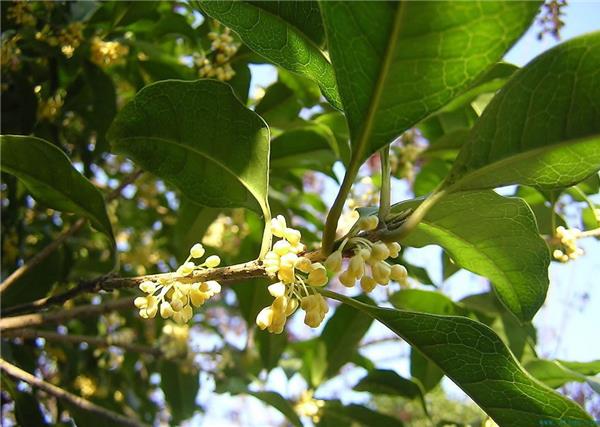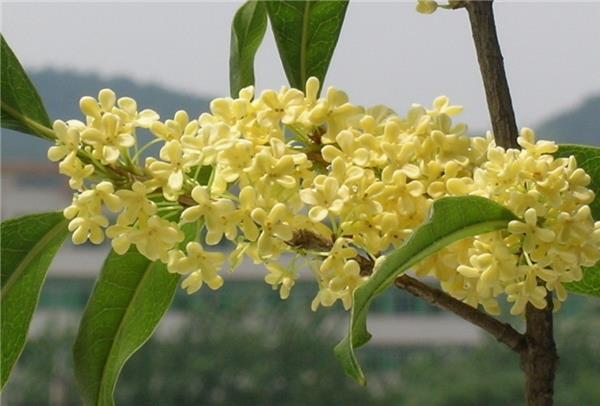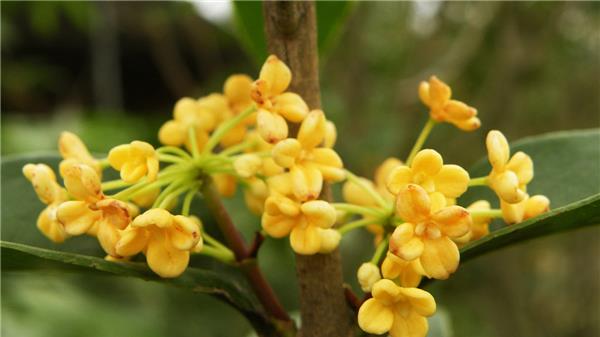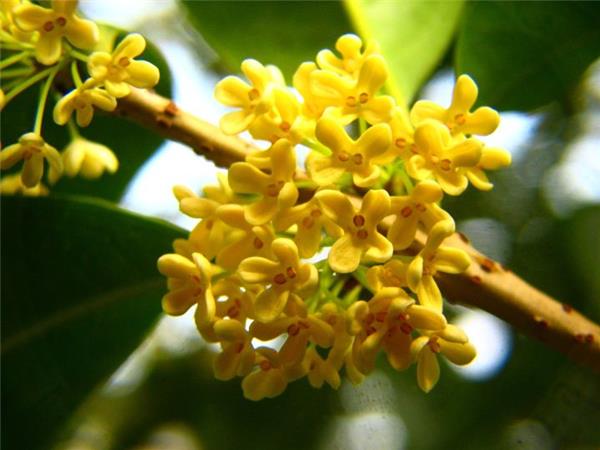[transplanting Osmanthus fragrans] points for attention in transplanting Osmanthus fragrans
Generally speaking, when it comes to sweet-scented osmanthus, the first thing that comes to mind is its fragrant fragrance, as if you can feel the fragrance of flowers coming from just listening to famous words. Today, let's take a look at how to transplant this kind of flower-scented trees.

1. Choose a good transplant tree
On the premise that it can meet the requirements of greening, the big trees with younger age, robust growth and no diseases and insect pests should be selected as far as possible.
two。 Do the preparatory work before excavation
(1) Water. Two days before transplanting, watering is carried out according to the soil condition to ensure that the soil water content is more than 60%, which is convenient for digging and carrying soil.
(2) binding. In order to facilitate excavation and transportation, crowning should be carried out before excavation, that is, the branches and leaves of the crown should be tied up with straw rope, at the same time, the trunk above the rhizome should be wrapped with straw or straw rope to avoid trunk injury (sweet-scented osmanthus bark is thin).
3. Start to dig
The transplanting time is better in February, when the trees are dormant, and soon after transplanting, the vitality becomes stronger, so it is easy to survive and must not be transplanted in summer. To dig a big sweet-scented osmanthus tree, you must take a good ball of soil. The size of the soil ball of single stem sweet-scented osmanthus should be 8-10 times of the diameter of the trunk from the ground 30cm, while for multi-dry sweet-scented osmanthus, the diameter of soil ball should be about 1 beat 3 or 2 inch 5 of the crown diameter. The thickness of the soil ball, according to the principle that most of the root system is within its range, is generally between 50~90cm. The shape of the earth ball is better in the shape of an apple.

4. Pruning and root cutting
Too many branches will consume a lot of nutrients and water, so proper pruning must be carried out. In order to improve its survival rate, the rhizome whose distance from the stump was 3 times the diameter of the stump was cut and smeared with low concentration of indole acetic acid solution.
5. Dig a tree hole
The tree hole in the newly planted land should be dug about a week before transplanting. The diameter of the pre-dug tree pit is about 1 meter larger than that of the transplanted tree (convenient for workers to operate in the pit), and the height and the height of the transplanting packaging can be. The excavated topsoil and the subsoil are placed separately, spread out to dry, and clean up the bricks, tiles and other impurities in the soil. According to the mixture ratio of 10 ∶ 1 (10 parts of soil), ferrous sulfate was mixed to increase the acidity of the soil, disinfect the soil and enhance the fertility at the same time.
6. Planting
Before planting, the original soil brought back by transport sweet-scented osmanthus trees should be backfilled with 10 to 15 meters of soil for the pre-dug tree holes. Because the sweet-scented osmanthus tree is not resistant to flooding, the depth of the planted sweet-scented osmanthus is 10 to 15 meters higher than the original ground. First of all, put the sweet-scented osmanthus tree in the direction of its original growth, and then put a plastic tube in each of the four corners of the tree pit to increase the air permeability of the root after filling the soil. Then remove the sample in sequence and backfill to 1 / 3 of the height of the earth ball, fill the original soil close to the surroundings of the soil ball, and fill a solid layer to prevent the soil ball from breaking. All the tree pits are filled firmly, cofferdam, braced and watered for the first time.

7. Maintenance
Support: after the sweet-scented osmanthus tree is transplanted, a pillar should be set up immediately to support the tree, so as to prevent the tree from being shaken by the wind and affecting its survival. It is generally fixed with triangular bracing pillars.
Pruning: after the big tree is transplanted, the crown should be pruned properly, and the number of branches cut off is equal to 1, 3, 2, 5 of the total crown, so as to maintain the water balance above ground and underground, and ensure the survival of planting.
Shade shed: to enter the bright light season, it is necessary to build a shade shed to prevent the strong light from burning itself and reduce water transpiration, and the weather can be removed when the weather turns cool.
Prevention and control of diseases and insect pests: sweet-scented osmanthus has fewer diseases and insect pests, and the more common ones are anthracnose, leaf spot and red spider, which only need to be controlled by Bordeaux, stone sulfur mixture, dichlorvos and so on.
Loose soil whitening: in spring and autumn, combined with fertilization can loosen the soil and weed, white the trunk before winter, can enhance the ability of cold resistance.

The above introduction is the transplanting methods of sweet-scented osmanthus and the matters needing attention in the process of transplanting and the daily maintenance methods after transplanting. If you are interested in planting a sweet-scented osmanthus tree in your own courtyard, you might as well try it with reference to the above introduction.
- Prev

[can hanging orchids be raised in water] can hanging orchids be raised in water
[can hanging orchids be raised in water] can hanging orchids be raised in water
- Next

What is the price of sweet-scented osmanthus trees? what's the use of sweet-scented osmanthus trees?
What is the price of sweet-scented osmanthus trees? what's the use of sweet-scented osmanthus trees?
Related
- Wuhan Hospital Iron Tree Blooming Result Was Instantly Frightened by the Gardener Master
- Which variety of camellia is the most fragrant and best? Which one do you like best?
- What is the small blue coat, the breeding methods and matters needing attention of the succulent plant
- Dormancy time and maintenance management of succulent plants during dormancy
- Minas succulent how to raise, Minas succulent plant pictures
- What are the varieties of winter succulent plants
- How to raise succulent plants in twelve rolls? let's take a look at some experience of breeding twelve rolls.
- Attention should be paid to water control for succulent plants during dormant period (winter and summer)
- Watering experience of twelve rolls of succulent plants
- Techniques for fertilizing succulent plants. An article will let you know how to fertilize succulent plants.

